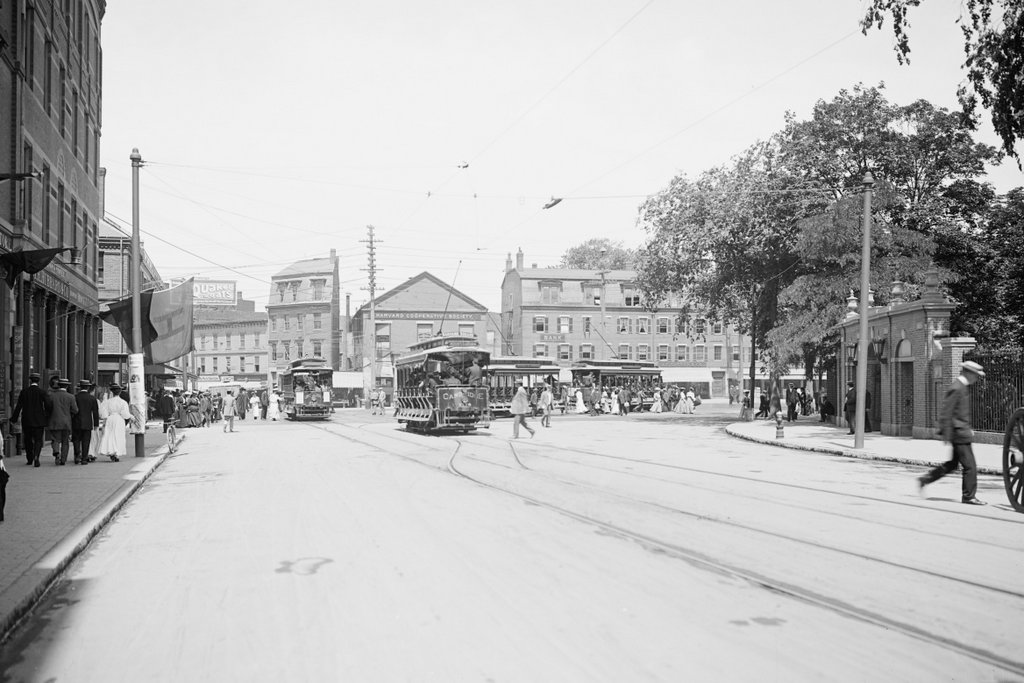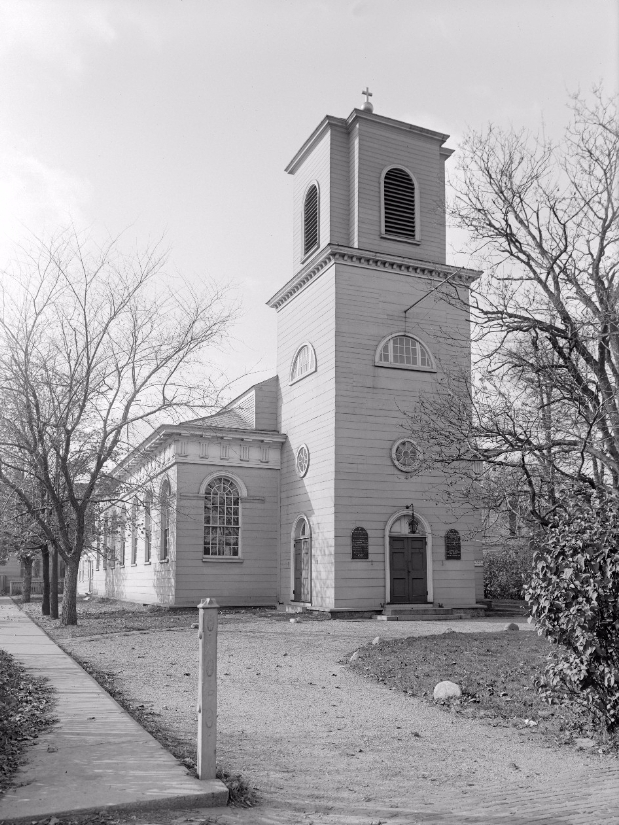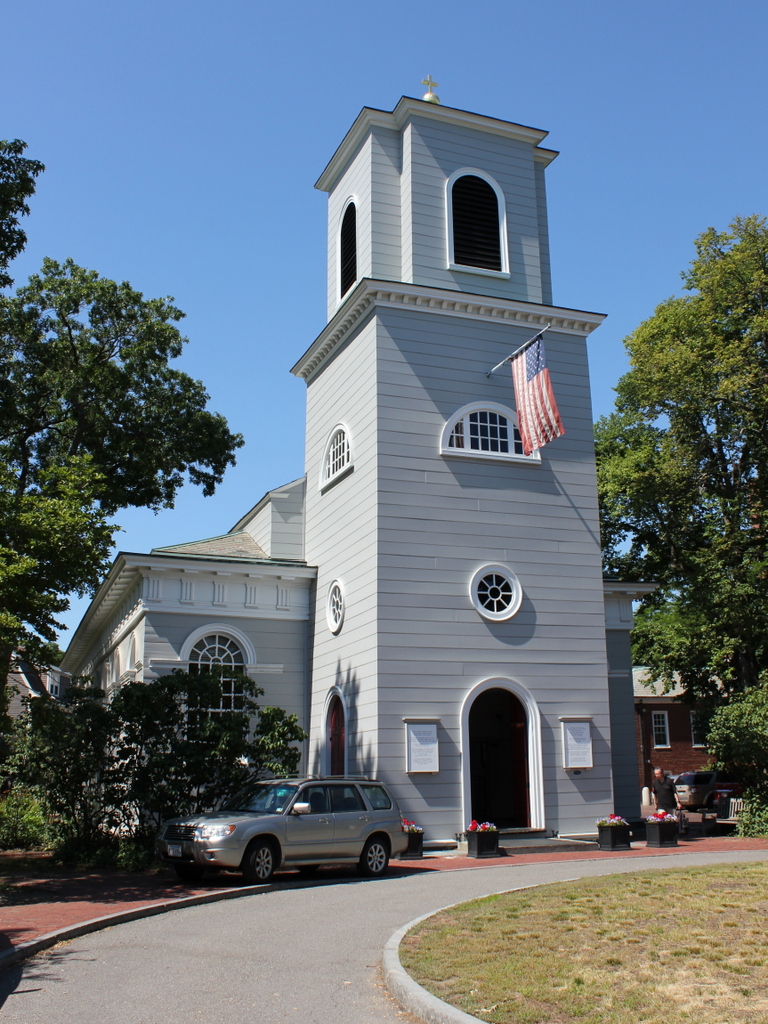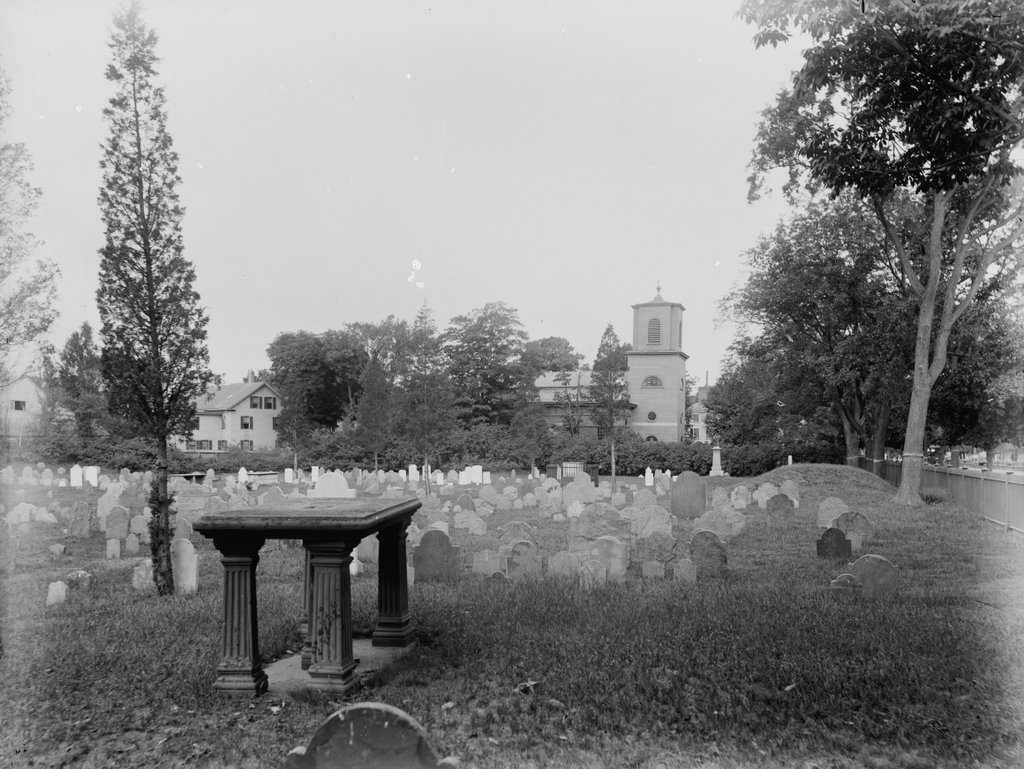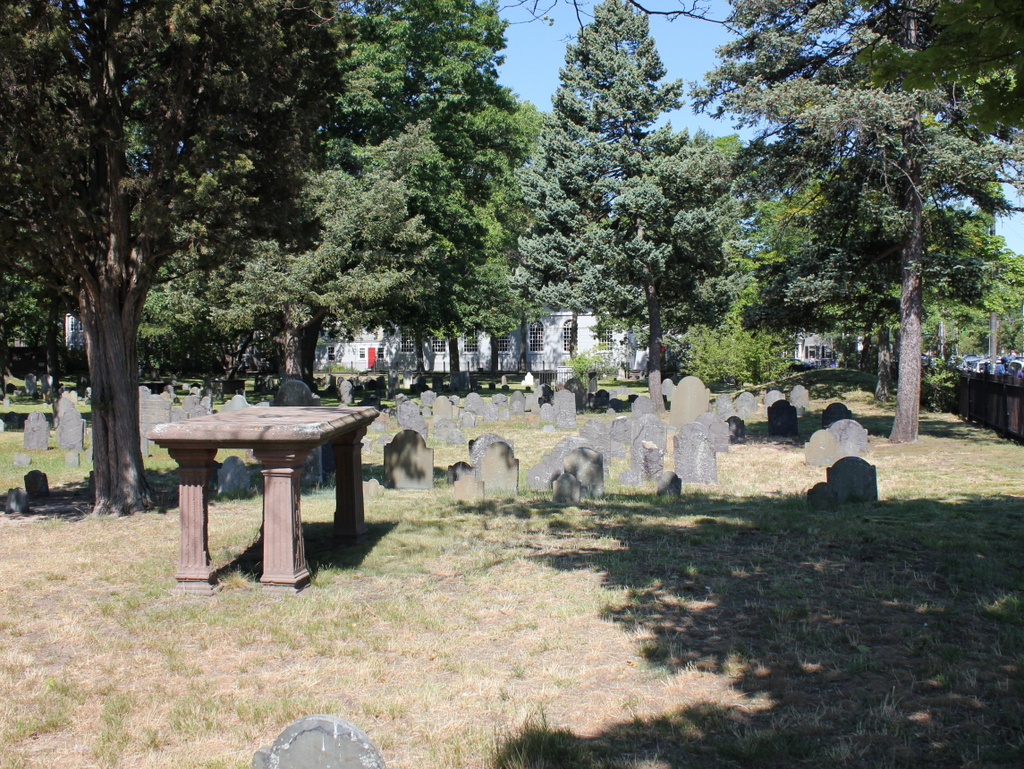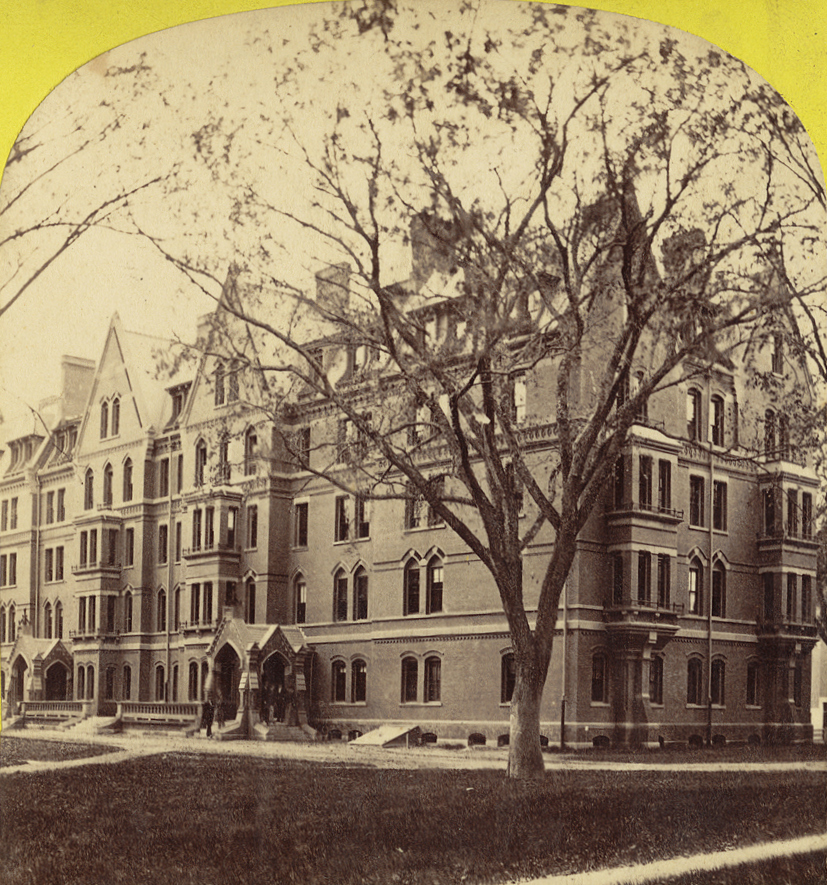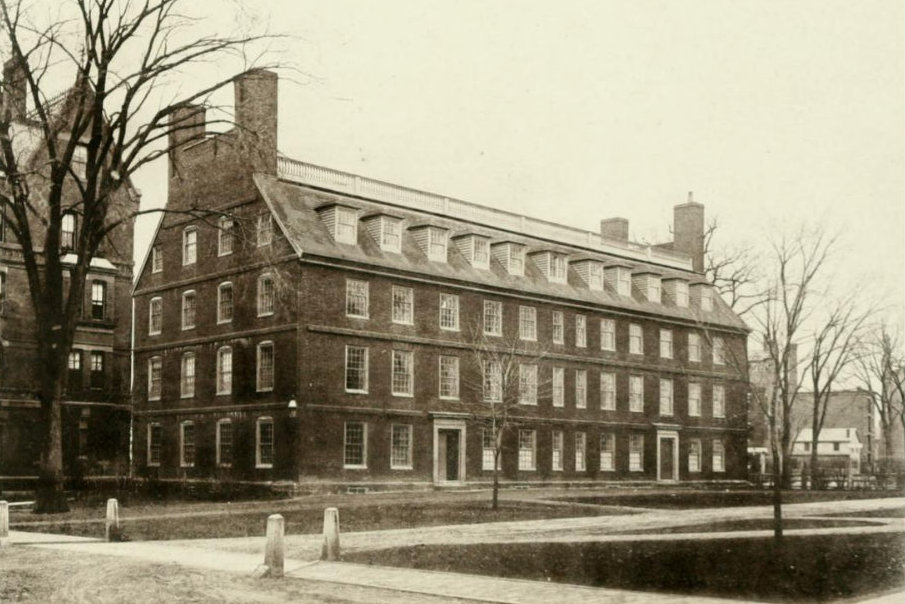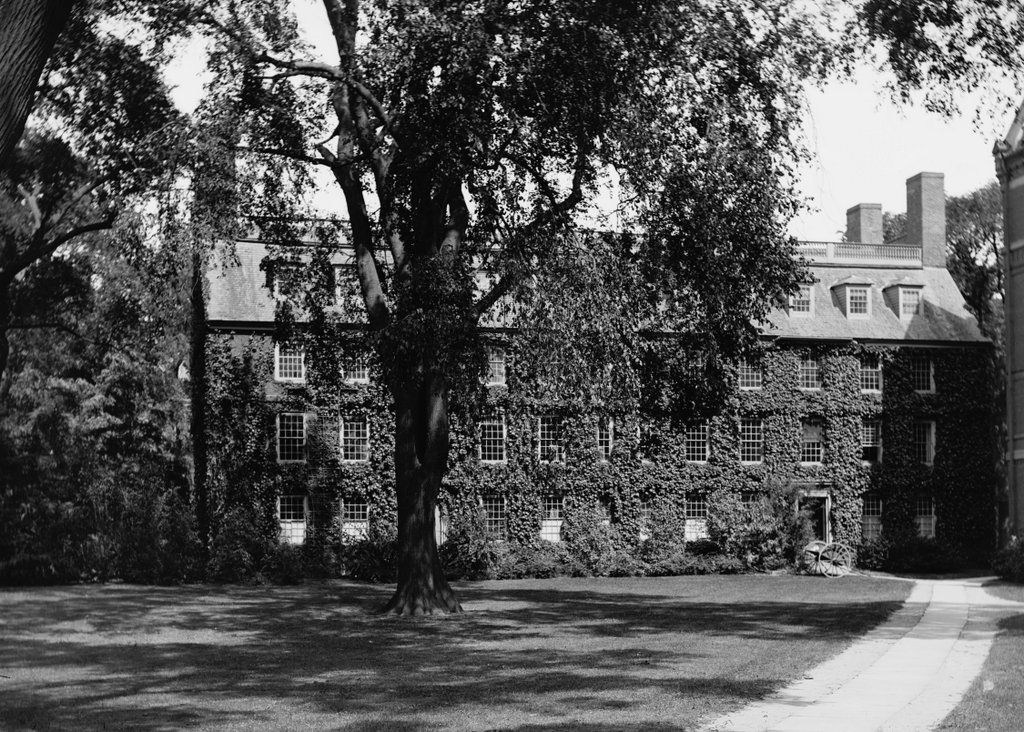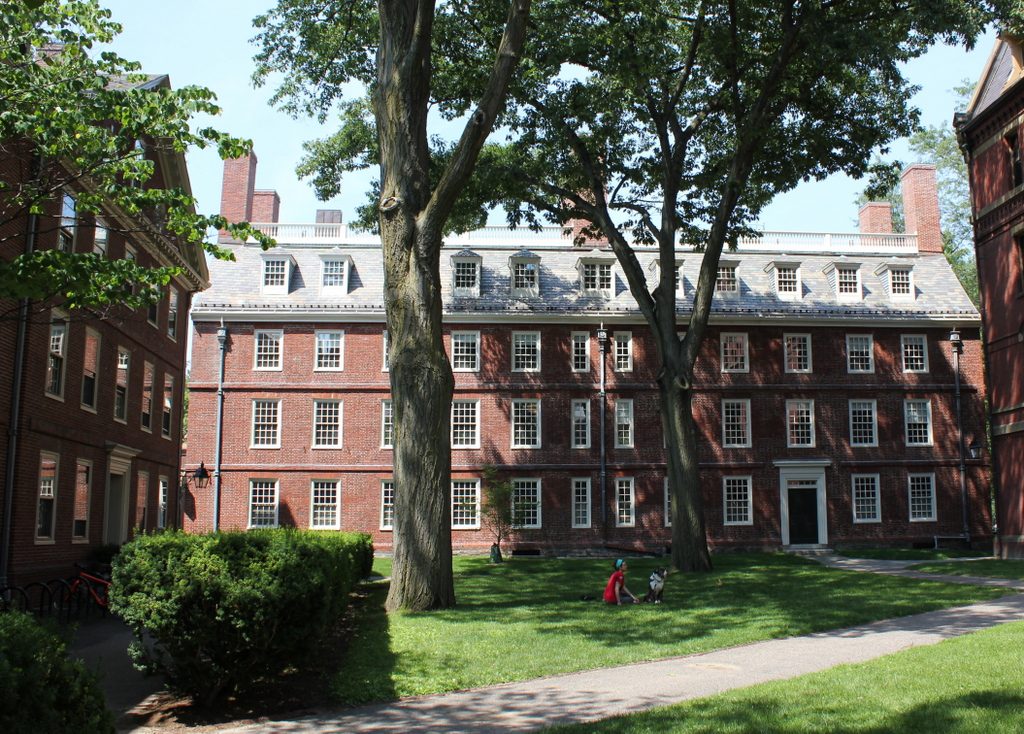Looking west toward Harvard Square on Massachusetts Avenue in Cambridge, around 1906. Image courtesy of the Library of Congress, Detroit Publishing Company Collection.
Harvard Square in 2016:
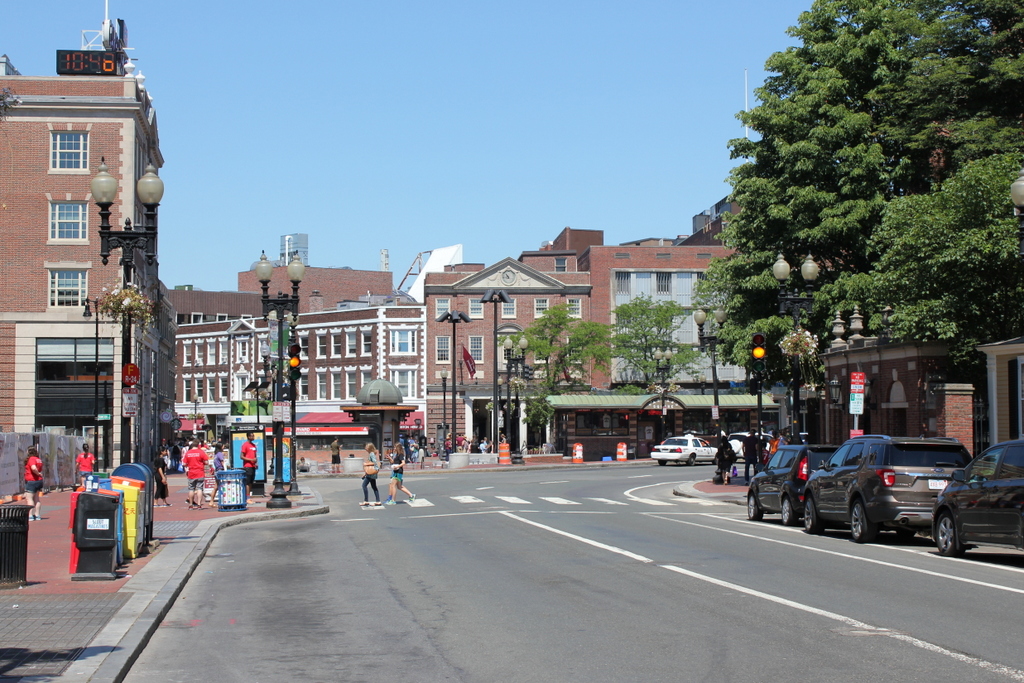
The first photo was taken only a few years before the Red Line opened. At the time, people traveling from Cambridge to Boston had to use the streetcars, as shown here. In the distance on the left side of the photo, passengers are boarding a trolley whose destination is “Subway Park Street,” and the trolley to the right of it is presumably heading outbound from Park Street, on the way to its destination at Mount Auburn. This route was replaced in 1912 by the much faster Red Line subway, which originally ran from Park Street to here at Harvard Square, and a station entrance was built in the middle of the square. The station also included a streetcar tunnel that allowed passengers to easily transfer between the subway and the trolleys; this tunnel was later modified for buses and is still in use as the Harvard Bus Tunnel.
As for the buildings at Harvard Square, very little is left from the turn of the century. None of the buildings in the first photo have survived, with most being demolished in the early 20th century to build the current Colonial Revival buildings. Most of the businesses themselves are long gone, except for the Harvard Cooperative Society. Originally located in the Greek Revival-style building in the center of the photo, this bookstore was founded in 1882 as a cooperative for Harvard students. Now commonly known as The Coop, the bookstore is still in operation in a different building on the same spot, and serves students at both Harvard and MIT. Otherwise, the only landmark remaining from the first photo is the gate on the far right side, which connects the square to Harvard Yard.

